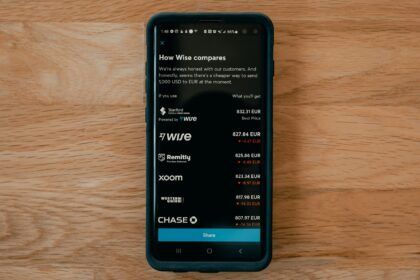If you have the funds available, purchasing a ride outright with cash often saves money by avoiding interest charges that come with borrowing. Paying upfront eliminates monthly obligations and can simplify ownership from day one.
Taking out a loan spreads the cost over time but introduces interest expenses that increase the total amount paid. However, financing allows buyers to keep liquid assets and may offer opportunities to build credit when managed responsibly.
Evaluating the true cost means comparing the interest rate on a loan against potential investment returns if the cash were used elsewhere. For example, if your loan carries a 5% interest rate but your savings earn only 1%, paying immediately might be smarter.
Car buying: financing vs paying cash
Choosing between acquiring a vehicle through credit or using immediate funds hinges primarily on evaluating interest rates and personal financial stability. Taking out a loan involves fixed or variable interest payments that can significantly increase the total expenditure over time. Conversely, allocating existing funds for the purchase avoids additional charges but impacts liquidity and investment opportunities.
When opting for a credit facility, it is vital to analyze the annual percentage rate (APR) offered by lenders. For instance, a 5% APR on a $30,000 principal extended over five years results in approximately $4,000 in interest expenses. This quantitative data enables individuals to determine if spreading payments justifies the increased cost compared to an upfront settlement.
Assessing Financial Impact of Loans
A structured comparison between installment acquisition and immediate payment reveals multiple factors beyond mere interest calculations. Monthly obligations related to credit reduce disposable income and may affect other credit-dependent activities like mortgage approval or business financing. On the contrary, utilizing lump sum reserves could diminish emergency savings or delay alternative investments with potentially higher returns.
- Interest accumulation: Higher rates amplify total costs; negotiating lower APRs benefits long-term affordability.
- Credit score influence: Regular timely payments positively impact creditworthiness, while missed installments carry penalties.
- Liquidity considerations: Immediate disbursement reduces accessible capital for unforeseen expenses.
An example from blockchain-based lending platforms demonstrates how decentralized finance (DeFi) offers flexible terms compared to traditional banks but demands thorough understanding of smart contract risks and market volatility before committing funds.
The decision-making process should also consider individual goals such as maintaining cash reserves versus optimizing asset acquisition speed. Engaging with financial advisors or leveraging simulation tools can clarify which path aligns better with one’s fiscal profile and risk tolerance.
Simplified steps to evaluate this choice include: calculating total repayment sums including interest, estimating impact on monthly budgets, assessing alternative investment yields on available funds, and reviewing personal risk management strategies. This approach ensures an informed selection based on concrete data rather than impulse or incomplete information.
Comparing total cost implications
Choosing between acquiring a vehicle through upfront payment or utilizing credit facilities significantly impacts the overall expenditure. Opting for direct settlement eliminates interest charges, reducing the final amount paid to the dealership. However, this approach requires substantial liquidity, which might not be feasible for all buyers.
Conversely, leveraging borrowed funds spreads the financial burden over time but introduces additional costs in the form of interest and loan-related fees. The annual percentage rate (APR) varies widely depending on creditworthiness and market conditions, affecting total repayment amounts. Understanding these components is critical when evaluating long-term affordability.
Total Cost Evaluation: Cash vs Loan
The immediate benefit of full upfront disbursement lies in avoiding financing premiums. For instance, purchasing a 30,000 USD vehicle outright means the buyer pays exactly that sum without supplementary charges. In contrast, taking a loan with a 5% APR over five years can increase cumulative payments by approximately 4,000 USD or more due to compounded interest.
On the other hand, installment arrangements may offer flexibility enabling users to maintain capital reserves for emergencies or alternative investments. A case study involving blockchain asset holders demonstrated that allocating funds toward appreciating cryptocurrencies instead of one-time purchases could yield higher returns than paying cash directly for vehicles.
The decision-making process should integrate personal financial priorities and market opportunities. For example, a technology professional investing excess savings into decentralized finance (DeFi) protocols might find credit engagement beneficial if returns exceed borrowing costs. Conversely, conservative individuals with low-risk tolerance often prefer eliminating debt obligations entirely.
A final consideration involves potential depreciation rates and resale values influenced by ownership duration tied to payment strategy. Liquidating assets quickly after purchase can mitigate interest expenses from loans but requires disciplined financial planning to avoid penalties or losses associated with early repayment options offered by lenders.
Impact on credit score
The choice between acquiring a vehicle through borrowing or outright settlement significantly influences one’s credit profile. Opting for a loan introduces a new installment account to the credit report, which can initially lower the score due to a hard inquiry and increased debt load. However, consistent on-time payments over time contribute positively by demonstrating responsible credit behavior. For instance, a study by FICO indicates that timely repayments of auto loans can improve scores by 10-15 points within the first year.
Conversely, settling the full amount upfront avoids new debt entries and hard pulls on credit reports but provides no opportunity to build credit history from this transaction. Without additional factors, this approach neither enhances nor diminishes the credit rating directly. It suits individuals prioritizing debt avoidance and those with already strong credit standings who do not seek further improvements through installment accounts.
How installment agreements affect scoring models
Credit scoring algorithms weigh multiple elements related to borrowed funds: payment history, amounts owed, length of credit history, and types of accounts. Introducing an auto loan adds variety to account types and increases total available credit, affecting utilization ratios differently than revolving lines like credit cards. For example:
- Payment Timeliness: Missing payments severely damages scores; conversely, punctuality boosts them.
- Loan Term: Longer terms may reduce monthly burdens but extend exposure to interest costs and risk.
- Debt-to-Income Ratio: Higher monthly obligations can impact lenders’ future approval decisions.
A case study analyzing borrowers over 24 months showed those maintaining steady loan payments improved their scores by an average of 12 points compared to individuals without similar installment histories.
The role of interest rates and financial discipline
The cost of borrowing via interest amplifies the total repayment amount but simultaneously offers structured opportunities for strengthening creditworthiness when managed properly. Choosing options with competitive annual percentage rates (APR) reduces overall expenses while preserving cash flow for other needs. A practical example involves buyers selecting loans with fixed low-interest rates around 3-5%, enabling predictable budgeting alongside positive reporting to bureaus.
This disciplined approach contrasts with impulsive acquisition funded solely by liquid assets; although no interest is paid in that scenario, potential benefits like improved lending terms in future applications might be missed. Therefore, evaluating one’s capacity for regular installments without compromising other financial goals remains essential when deciding how to secure transportation funding.
Cash Flow and Budgeting Effects in Vehicle Acquisition Decisions
Opting to acquire a new automobile through direct payment significantly impacts immediate liquidity, reducing available funds but eliminating recurring monthly obligations. This approach requires sufficient reserves, which can constrain other expenditures or investments. For example, allocating $30,000 upfront diminishes cash reserves instantly, potentially affecting emergency funds or short-term financial flexibility.
Conversely, selecting credit arrangements disperses the total expense over time, improving near-term cash flow management but introducing interest payments that increase overall cost. A typical five-year loan with an annual percentage rate (APR) of 5% on a $30,000 vehicle results in monthly installments around $566, with total interest paid approximately $3,960. This spreads out payments yet commits part of future income streams to servicing debt.
Budgetary Implications of Upfront Payment vs Loan Structures
When deciding between lump-sum disbursement and installment-based acquisition, one must analyze their budgeting capacity meticulously. Liquid asset depletion limits ability to absorb unforeseen expenses without resorting to additional credit lines. Maintaining a buffer equivalent to 3-6 months of living expenses remains advisable for financial stability.
A financing arrangement allows preservation of capital for other uses such as investment or emergency funds but demands disciplined monthly budget adherence. It is crucial to ensure that debt service coverage ratio (DSCR)–monthly disposable income divided by debt obligations–remains above recommended thresholds (typically 1.25) to avoid liquidity strain.
- Example: A buyer earning $5,000 monthly with existing debts totaling $1,000 should not exceed $2,000 in combined loan repayments to maintain DSCR at safe levels.
- Example: Sudden income reduction under financing contracts may lead to missed payments and penalties; upfront acquisition mitigates this risk but sacrifices cash availability.
The decision-making process must incorporate both quantitative data and qualitative factors such as risk tolerance and financial goals. Individuals prioritizing stability and minimal indebtedness may prefer outright settlement despite reduced liquid assets. Those valuing diversified capital allocation might select borrowing options with manageable repayment schedules.
Ultimately, understanding the interplay between immediate expenditure and periodic commitments enables informed choices that align with personal financial frameworks. Careful evaluation using tools like amortization calculators and budget simulators can clarify long-term repercussions before finalizing any vehicle procurement strategy.
Negotiation Leverage Differences: Strategic Insights on Payment Methods
Opting for upfront settlement rather than credit arrangements often enhances bargaining power by eliminating lender-imposed constraints and interest burdens. Paying immediately reduces the seller’s risk, allowing for more aggressive price discussions and potential incentives that a loan-dependent purchaser might not access.
Conversely, leveraging borrowed capital introduces flexibility in cash flow management but can diminish negotiating strength due to added financial obligations such as interest rates and repayment schedules. This trade-off impacts the decision-making process significantly, especially when evaluating total cost over time versus immediate liquidity advantages.
Broader Implications and Future Developments
The evolving dynamics between debt acquisition and direct payment influence market behavior beyond individual transactions. For example:
- Interest rate fluctuations directly affect loan affordability, thereby shifting leverage toward buyers with liquid reserves capable of immediate settlement.
- Advanced blockchain-based lending platforms could introduce transparent, programmable contracts that optimize financing terms, potentially narrowing the gap in negotiation power.
- Tokenized assets and decentralized finance (DeFi) may soon provide alternative collateral mechanisms, empowering borrowers with enhanced negotiation tools via diversified asset utilization.
A comparative table illustrates key factors shaping leverage outcomes:
The strategic choice between immediate payment and borrowing profoundly shapes negotiation trajectories and financial outcomes. Understanding these nuances enables better-informed decisions aligned with individual priorities–whether minimizing long-term costs or preserving liquidity. As technology integrates further into financial ecosystems, expect enhanced transparency and adaptability that will refine these leverage differentials even more, ultimately empowering purchasers with tailored negotiation capabilities suited to their unique fiscal contexts.





